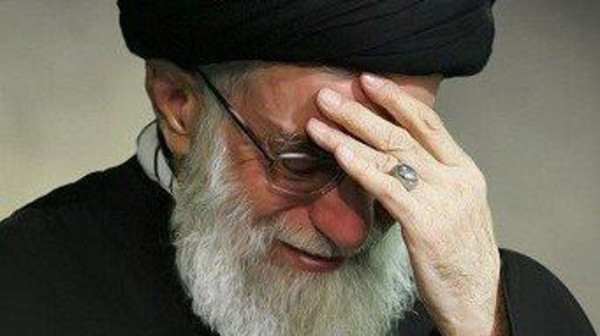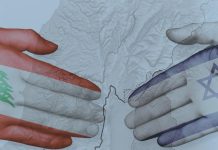Is it Still Possible to Coexist with the Tehran Regime?
Eyad Abu Shakra/Asharq Al Awsat/July 05/17
Over the weekend, the French capital Paris played host to a massive rally organized by the Iranian opposition and attended by many international political figures. The timing of this rally was particularly significant, given the historical and exceptional current state of affairs in the Middle East and the unprecedented tense relations between its countries.
As expected on an occasion like this, the main stress in most positions expressed by Iranian, Middle Eastern and Western speakers was that it was impossible for a regime with a “chemistry” like that of the Tehran regime to change, and that all attempts to make it moderate its stances are doomed to failure.
Indeed, gambling on the “rationality” of the Iranian leaders, and regarding them as “not suicidal” – to quote former President Barack Obama in his marketing pitch for the JCPOA – are proving meaningless every day. And despite the atrocities committed by ISIS and its systematic destruction wherever it moves “achieved” by the tacit cooperation of players benefiting from it, there are two clear realities:
First is that Iran’s sectarian militias, as well as those supported by Tehran through its “Revolutionary Guards” (IRGC) do not differ much from ISIS in terms of brutal exterminatory practices justified by alleged religious legitimacy.
Second is that there is not much difference either between diplomatically-clad extremism, as reflected in Iran’s President Hassan Rouhani and his Foreign Minister Mohammad Javad Zarif, and the brazenly-militaristic and sectarian extremism, as expressed in the gung-ho speeches of IRGC leaders like Mohammad Ali Jaafari and Qasem Soleimani as well as their militia henchmen in Iraq, Lebanon, Yemen and Syria. In fact, all traces of “difference” disappear when positions being explained pertain to the Gulf region, the Fertile Crescent and Yemen.
Sure enough, Iran’s ambition of achieving regional supremacy did not start with Khomeini’s Islamic Revolution of 1979 when it launched its campaign of “Exporting the Islamic Revolution,” followed soon by it diligent outbidding on the path of “Liberating Palestine.” As many remember under Shah Mohammad Reza Pahlavi, Iran was in 1955 a founder member of the Baghdad Pact – along with the UK, Turkey, Pakistan and Iraq under the auspices of the US, before Iraq withdrew resulting in re-naming CENTO (Central Treaty Organization). Later, the Shah made no secret of his ambition that Iran become “The Policeman of the Gulf” since it was the most populous country sharing its coast.
However, there is a big difference between the ambition of a regional leader to enhance the influence of his nation based on his belief in its civilization and capabilities, and the aggressive insistence of a theocratic regime on “exporting” its political and religious “legitimacy” to its neighboring countries by force and conspiring to overthrow their governments throw intrigue and sectarian incitement.
Since 1979, “exporting” the revolution, along with the notion of “Vali e Faqih” has been one of the two cornerstones of the Khomeini regime, and now still followed by his successor Ali Khamenei. This “project” suffered a setback during the Iran – Iraq War, which was ended by the international community. Checking Iran’s ambitions at that time was temporary, and they were never really eradicated because Tehran continued to build subservient sectarian military organizations throughout the Middle East. The first has been Lebanon’s “Hezbollah” – initially, under under the cloak of “Islamic Amal.” It was soon to be followed by Iraqi Shi’ite militias that had fought with the Iranian armed forces against the Iraqi army during the Iran – Iraq War. Many leaders of the latter today are the de facto leaders of Iraq.
Noteworthy here is the fact that the Hafez Al-Assad regime in Syria also sided with Iran during that war against Iraq. Actually, then Iranian ambassador to Damascus Ali Akbar Mohtashamipur (who later became Interior Minister in Iran) was the authority entrusted with founding “Hezbollah” in Lebanon. In fact, Tehran’s efforts were not limited to Iraq, Syria and Lebanon, but were later expanded to include Yemen through the Houthis, and Bahrain through “mullahs”, who had no qualms about Iranian historical claims over their country.
On the other hand, Iran did not concentrate its efforts solely on Shi’ite organizations, but achieved a breakthrough with the Sunnis, namely in the Palestinian occupied territories. This far-sighted strategy had two aims: The first, was that backing Sunni organization in Palestine would give credibility to its slogans about “liberating Palestine”. The second, it would allow to freely found, arm and support Shi’ite militias without being accused of practicing sectarian discrimination. Indeed, this is exactly what has happened and under the banners of “Islamic Unity,” Tehran has been bankrolling Shi’ite – Sunni groups that are acting as effective vehicles to its propaganda and defenders of its policies and adventures.
Last week Hassan Nasrallah, Secretary General of “Hezbollah”, said in a televised speech that “a war Israel launches against Lebanon and Syria will never be limited to these two arenas, but will open the door before thousands of fighters (Shi’ite of course) from Iraq, Yemen, Iran, Afghanistan, Pakistan and other countries in the world to join Syria (i.e., Bashar al-Assad regime) and the Resistance (i.e.. ‘Hezbollah’)…”
What these words mean could not be clearer. The man is prepared to invite – if an invitation is ever needed – Iran’s IRGC to fight on Lebanese soil, without even bothering to consult with a government in which his pro-Tehran party is represented. Nasrallah’s declaration came after the “reassurances” made by Iranian Defense Minister Hussein Dehghan that “Iraq is now a part of Iran!”, and the infamous proclamation by Iran’s ex-Intelligence Minister Heydar Moslehi that “Iran now controls four Arab capital cities (Baghdad, Damascus, Beirut and Sana’a)…”
In the meantime, Iran has been busy, both, directly or through its militia henchmen, in justifying its war of sectarian “cleansing” and displacement that it has been fighting in Syria since the 2011 uprising, as well as in Iraq. Tehran and its henchmen’s justifications have been fighting against “Takfir” and “Takfiris”, including al-Qaeda, al-Nusra Front and ISIS. However, the fact that there were old understandings and dealings between Iran and al-Qaeda is well known, which is why the terrorist group never attacked Iranian targets. More recently, ISIS rarely fought against Assad’s forces, choosing instead to attack its opponents, namely the “Free Syrian Army”. Moreover, Assad regime’s smuggling of extremist terrorists across the Iraqi border in order to hassle and harrass American troops in Iraq is well documented by Iraqi authorities, as is the extremist fighters’ “escape” from Iraqi prisons to join ISIS in Syria.
Today, now that the Iranian leadership has exploited and benefited from ISIS’ destruction of several (Sunni) Syrian and Iraqi cities, one needs to ask a serious question: Is it possible to coexist with the Tehran regime?
In Paris, thousands of Iranians exiled by the regime answered the question loud and clear, and so did millions of Iranians before at home: No. No coexistence with this regime.
If this is what Iranians themselves believe, how can we the Arabs disagree?





















